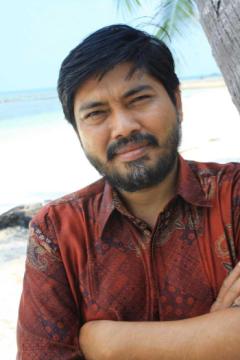Maritime Defense System Outlook Under TNI chief of Army Origin
Certain military observers are therefore of the opinion that the
appointment of Andika was an indication of a political victory rather one based on a merit system within the country’s
uniformed institutions. Indeed, months before his nomination to the parliament by President Joko
Widodo, a series of political maneuvers had been launched by the
so-called "civil society organizations" or NGO demanding the President to
immediately appointed General Andika as TNI commander. This also included lobbying by his father-in-law, retired Army Lieutenant General AM Hendropriyono.
For the maritime
sector, the appointment of an Army top brass as TNI commander TNI will only strengthen the prevailing
defense system, one that gives a big push to the Army, rather that the Navy or Air Force. The system is called Pertahanan Pulau-Pulau Besar (Big
Islands Strategy) and formally stipulated through Presidential Regulation No.
8/2021 on General Policies of State Defense. The Indonesia Navy has been struggling so
long to introduce a maritime-centered one and it will have gained more momentum had Admiral Yudo is at helm of TNI.
As the new TNI commander, Gen. Andika is in charge of the military modernization programs that should be implemented during his term, which unfortunately lasts only one plus year, as he will reach a compulsory mandatory retirement age of 58 for military officers next year. Note that this can be extended up to 60 at the discretion of the Presidential. Andika was hailed by observers as a bright,
innovative officer, a graduate from overseas military training centers and
universities.
According to an Andika presentation before the House Commission I, in
charge of defense and foreign affairs, during his fit and proper test for him after being
nominated by the President as the sole candidate, he promised to carry on what had been planned by his predecessor. There are, however, several key areas of concern for Andika such as, among other, reinforcing land, sea and air border patrols
and cyber security.
What General Andika endeavored to
offer before the Parliament was a basically standard approach normal within an existing context, while in fact claimed they represented quite a breakthrough. Those
who adhered to another strategic point of view were nevertheless of the opinion that he should be planning to introduce a more appropriate maritime defense system, as an urgent need for this has been aired
for a long time, both by the Indonesia Navy itself and pro-maritime activists; unfortunately it has gotten no traction until now. There was indeed a fervent hope that the idea can be pushed forward has the chosen TNI chief been Admiral Yudo.
The structure and details of a maritime defense system are still unclear despite President Joko Widodo’s Global Maritime Fulcrum (GMF) vision, which emphasizes the increasingly important role of the seas in Indonesia's geopolitical and geoeconomics strategy. That’s why the appointment of a TNI commander with a strong maritime
background would have been much appreciated, although the officer selected is not expected to to pivot immediately in view of structural and cultural barriers
within TNI, as mentioned earlier. He could at least trigger broader discussions and
direct them to in a meaningful way to work toward the intended objective.
Now, what indeed does a maritime defense
system look like? There is no uniform answer to this question, since the circulation of the concept is limited to within
Indonesia Navy circles, let alone TNI headquarters. My understanding is that the ongoing
discussions indicate a system based on the premise that the branch
should be treated as a core component in defense architecture, and to do so it
must be transferred to a "blue water navy".
Currently, the Indonesian Navy (TNI AL) is projected as a "brown water force" whose task is heavily concentrated on coastal defense, a position that is totally relevant with a Big Islands
Strategy. If the a maritime defense
system can be adopted, the posture of TNI AL will significantly modified. First, its perimeter would dramatically expand, with the possibility of reaching beyond our Exclusive Economic Zone (EEZ). Second, warships and dedicated aircrafts, among others
would consequently be required, and their number will be considerably higher than existing armament.
Just by comparison, according
to available data, the total roster of personnel of TNI AL currently numbers 70,797, considerably smaller than that of the Indonesian Army (TNI AD) which reaches 347,529. Still, it is much bigger than that of the Indonesian Air Force (TNI AU) at just 37,830 personnel. This composition is a reflection of Indonesia’s defense architecture, where land forces are seen as more important than those of the seas or the air.
An ideal maritime defense system should actually take center stage in the President Joko Widodo administration, for since 2019 up to the present a maritime defense is one of five pillars of GMF. It seems that the prospect of a maritime defense system has a long way to go. Further, the appointment of Gen. Andika as TNI commander is honestly not expected to advance it much.
Diterbitkan dalam koran Independent Observer, edisi Jumat, 10 Desember 2021





Komentar
Posting Komentar